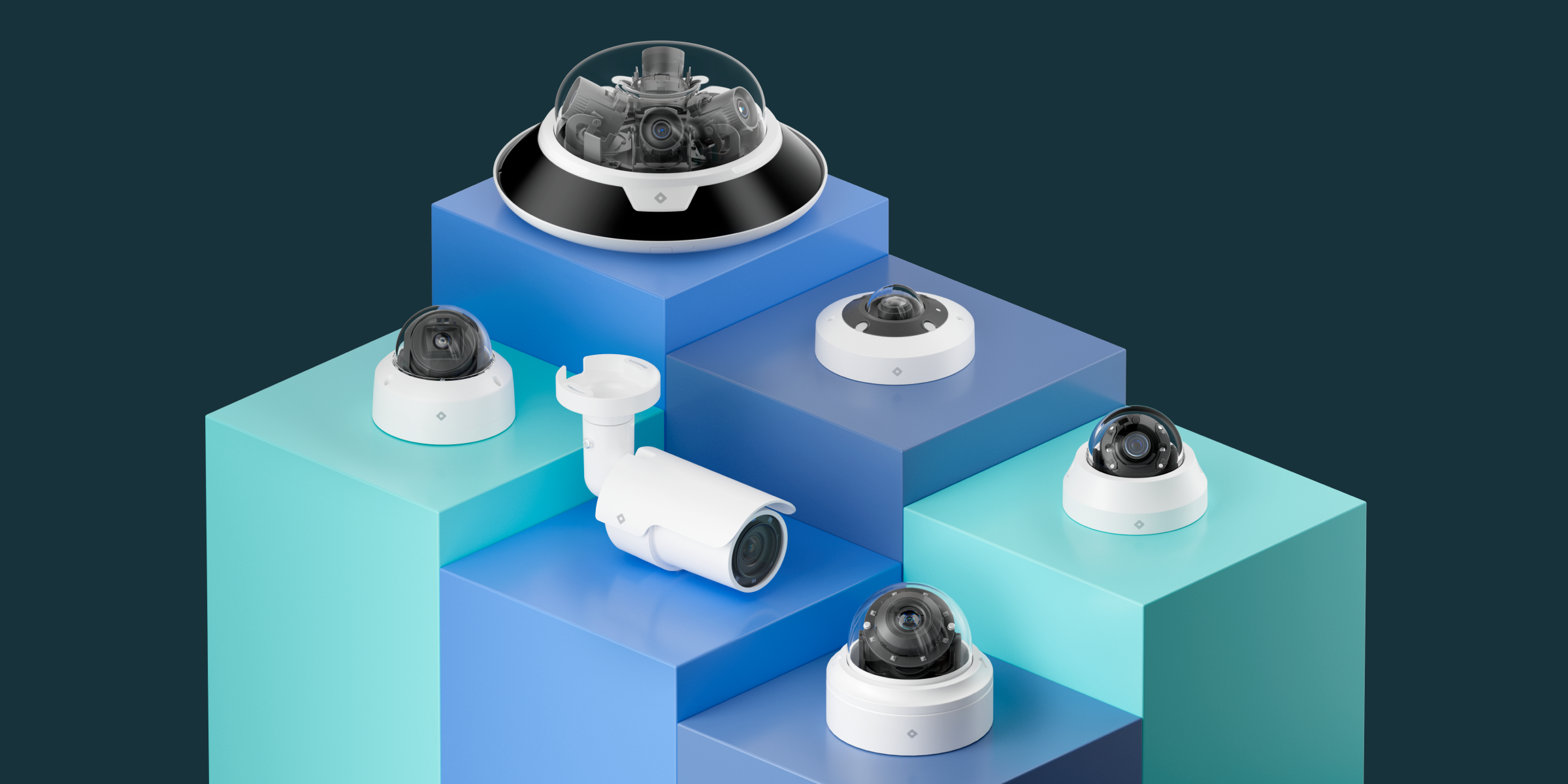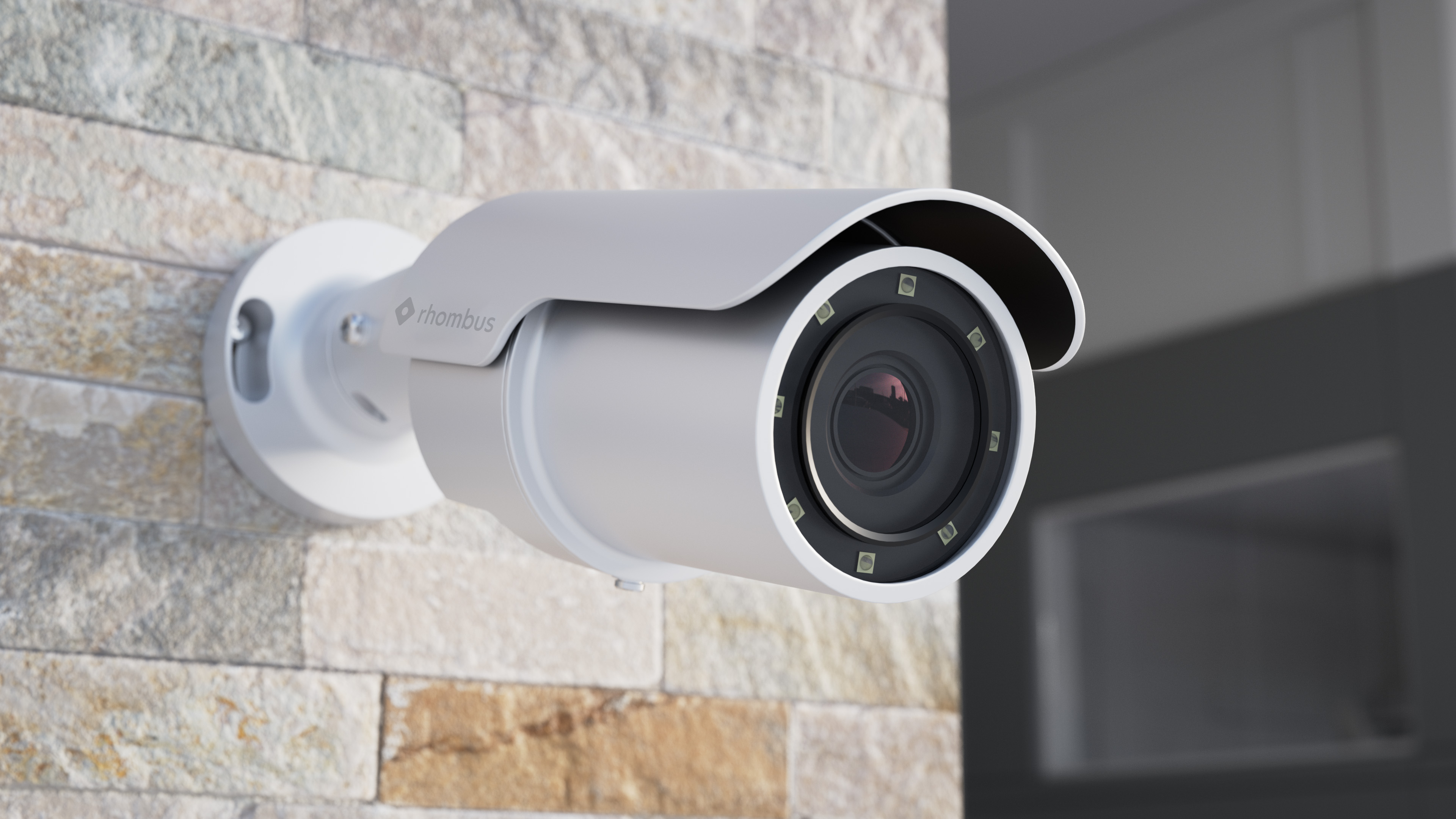The Full Transition: On-Premise to Cloud Physical Security
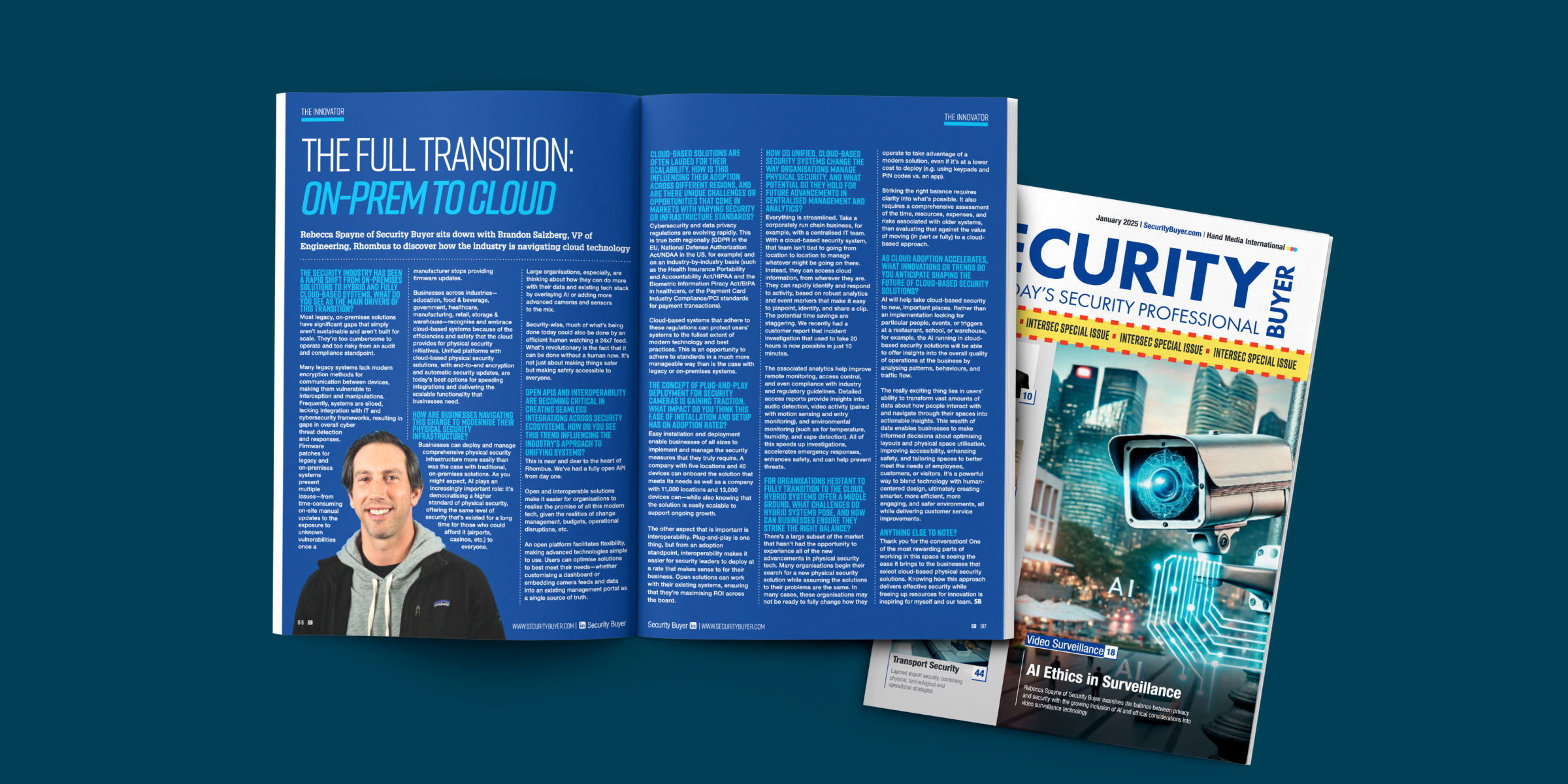
This article was originally published in the January 2025 edition of Security Buyer. To access the original article, click here.
Rebecca Spayne of Security Buyer sits down with Brandon Salzberg, VP of Engineering, Rhombus to discover how the industry is navigating cloud technology.
The security industry has seen a rapid shift from on-premises solutions to hybrid and fully cloud-based systems. What do you see as the main drivers of this transition?
Most legacy, on-premises solutions have significant gaps that simply aren’t sustainable and aren’t built for scale. They’re too cumbersome to operate and too risky from an audit and compliance standpoint.
Many legacy systems lack modern encryption methods for communication between devices, making them vulnerable to interception and manipulations. Frequently, systems are siloed, lacking integration with IT and cybersecurity frameworks, resulting in gaps in overall cyber threat detection and responses.
Firmware patches for legacy and on-premise systems present multiple issues - from time-consuming on-site manual updates to the exposure to unknown vulnerabilities once a manufacturer stops providing firmware updates.
Businesses across industries - education, food & beverage, government, healthcare, manufacturing, retail, storage & warehouse - recognise and embrace cloud-based systems because of the efficiencies and safety that the cloud provides for physical security initiatives. Unified platforms with cloud-based physical security solutions, with end-to-end encryption, and automatic security updates, are today’s best options for speeding integrations and delivering the scalable functionality that businesses need.
How are businesses navigating this change to modernise their physical security infrastructure?
Businesses can deploy and manage comprehensive physical security infrastructure more easily than was the case with traditional, on-premises solutions. As you might expect, Al plays an increasingly important role: It’s democratising a higher standard of physical security, offering the same level of security that’s existed for a long time for those who could afford it (airports, casinos, etc.) to everyone. Large organisations, especially, are thinking about how they can do more with their data and existing tech stack by overlaying Al or adding more advanced cameras and sensors to the mix.
Security-wise, much of what’s being done today could also be done by an efficient human watching a 24/7 feed. What’s revolutionary is the fact that it can be done without a human now. It’s not just about making things safer, but making safety accessible to everyone.
Open APIs and interoperability are becoming critical in creating seamless integrations across security ecosystems. How do you see this trend influencing the industry’s approach to unifying systems?
This is near and dear to the heart of Rhombus. We’ve had a fully open API from day one.
Open and interoperable solutions make it easier for organisations to realise the promise of all this modern tech, given the realities of change management, budgets, operational disruptions, etc.
An open platform facilitates flexibility, making advanced technologies simple to use. Users can optimise solutions to best meet their needs - whether customising a dashboard or embedding camera feeds and data into an existing management portal as a single source of truth.
Cloud-based solutions are often lauded for their scalability. How is this influencing their adoption across different regions, and are there unique challenges or opportunities that come in markets with varying security or infrastructure standards?
Cybersecurity and data privacy regulations are evolving rapidly. This is true both regionally (GDPR in the EU, National Defense Authorization Act/NDAA in the US, for example) and on an industry-by-industry basis (such as the Health Insurance Portability and Accountability Act/HIPAA and the Biometric Information Piracy Act/BIPA in healthcare, or the Payment Card Industry Compliance/PCI standards for payment transactions).
Cloud-based systems that adhere to these regulations can protect users’ systems to the fullest extent of modern technology and best practices. This is an opportunity to adhere to standards in a much more manageable way than is the case with legacy or on-premises systems.
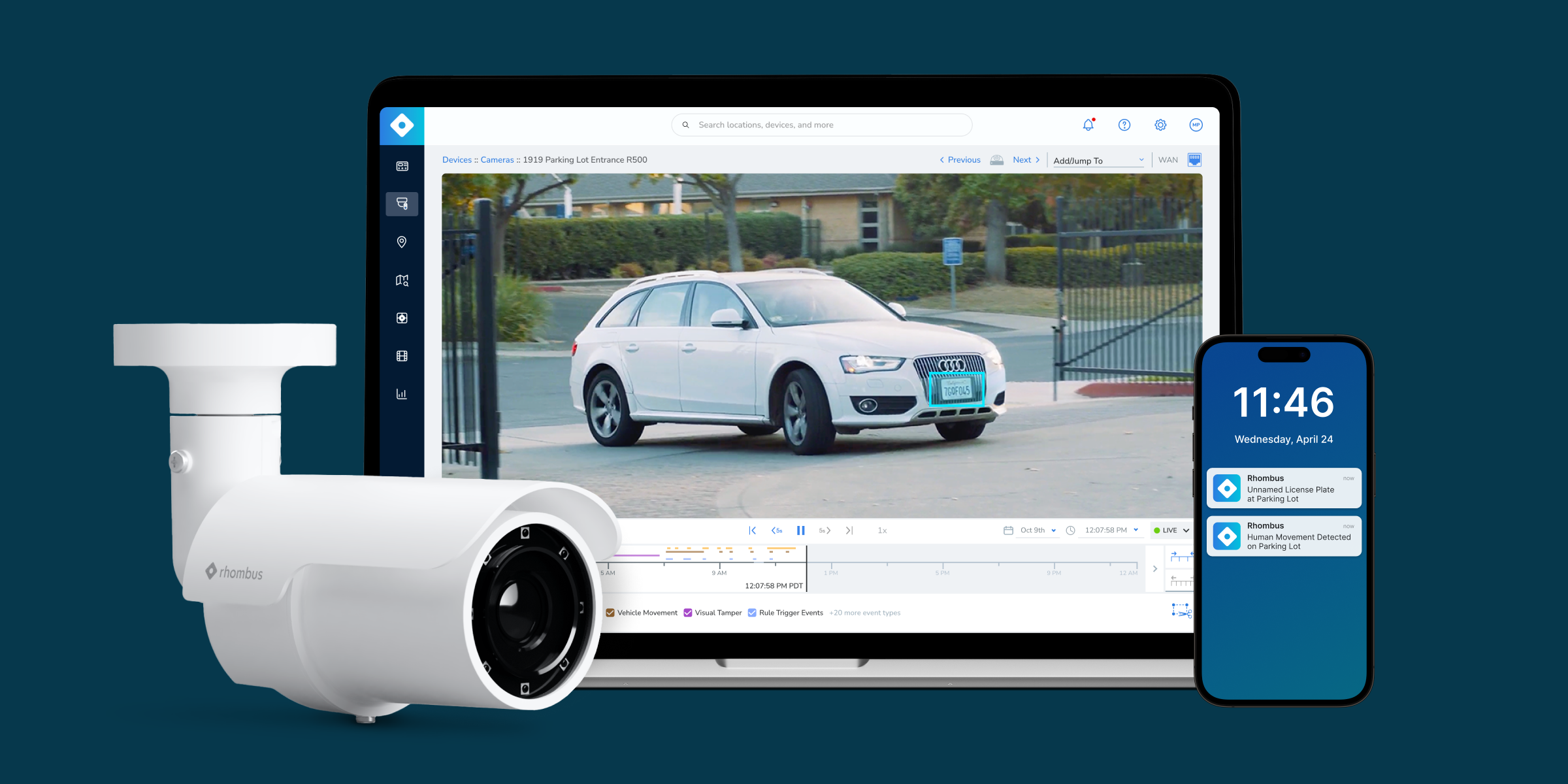
The concept of plug-and-play deployment for security cameras is gaining traction. What impact do you think this ease of installation and setup has on adoption rates?
Easy installation and deployment enable businesses of all sizes to implement and manage the security measures that they truly require. A company with five locations and 40 devices can onboard the solution that meets its needs as well as a company with 11,000 locations and 13,000 devices can-while also knowing that the solution is easily scalable to support ongoing growth.
The other aspect that is important is interoperability. Plug-and-play is one thing, but from an adoption stand point, interoperability makes it easier for security leaders to deploy at a rate that makes sense for their business. Open solutions can work with their existing systems, ensuring that they’re maximising ROl across the board.
How do unified, cloud-based security systems change the way organisations manage physical security, and what potential do they hold for future advancements in centralised management and analytics?
Everything is streamlined. Take a corporately run chain business, for example, with a centralised IT team. With a cloud-based security system, that team isn’t tied to going from location to location to manage whatever might be going on there. Instead, they can access cloud information, from wherever they are. They can rapidly identify and respond to activity, based on robust analytics and event markers that make it easy to pinpoint, identify, and share a clip. The potential time savings are staggering. We recently had a customer report that incident investigation that used to take 20 hours is now possible in just 10 minutes.
The associated analytics help improve remote monitoring, access control, and even compliance with industry and regulatory guidelines. Detailed access reports provide insights into audio detection, video activity (paired with motion sensing and entry monitoring), and environmental monitoring (such as for temperature, humidity, and vape detection). All of this speeds up investigations, accelerates emergency responses, enhances safety, and can help prevent threats.
For organisations hesitant to fully transition to the cloud, hybrid systems offer a middle ground. What challenges do hybrid systems pose, and how can businesses ensure they strike the right balance?
There’s a large subset of the market that hasn’t had the opportunity to experience all of the new advancements in physical security tech. Many organisations begin their search for a new physical security solution while assuming the solutions to their problems are the same. In many cases, these organisations may not be ready to fully change how they operate to take advantage of a modern solution, even if it’s at a lower cost to deploy (e.g. using keypads and PIN codes vs. an app).
Striking the right balance requires clarity into whats possible. It also requires a comprehensive assessment of the time, resources, expenses, and risks associated win older systems, then evaluating that against the value of moving (in part or fully) to a cloud-based approach.
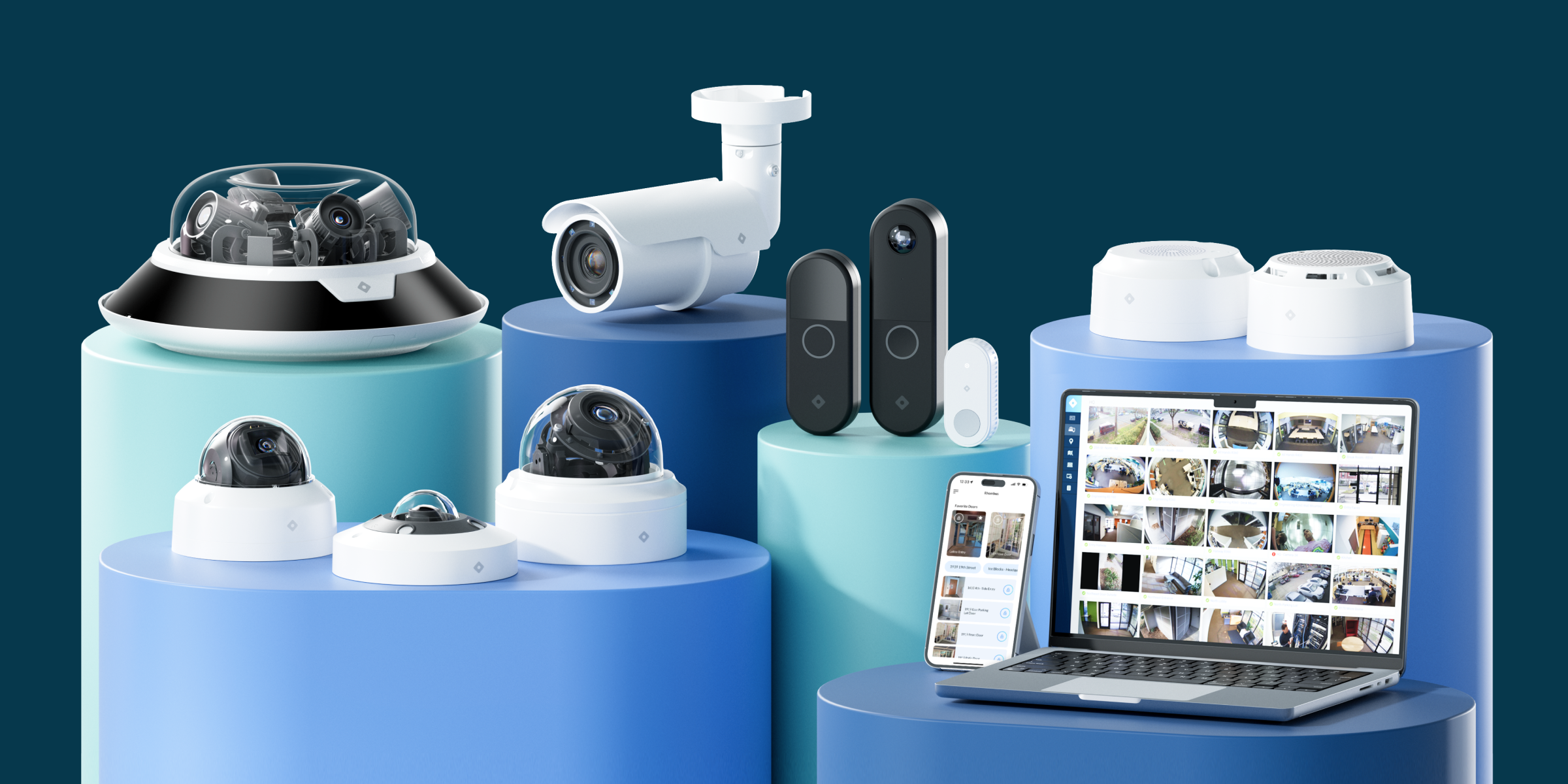
As cloud adoption accelerates, what innovations or trends do you anticipate shaping the future of cloud-based security solutions?
Al will help take cloud-based security to new, important places. Rather than an implementation looking for particular people, events, or triggers at a restaurant, school, or warehouse, for example, the Al running in cloud-based security solutions will be able to offer insights into the overall quality of operations at the business by analysing patterns, behaviours, and traffic flow.
The really exciting thing lies in users’ ability to transform vast amounts of data about how people interact with and navigate through their spaces into actionable insights. This wealth of data enables businesses to make informed decisions about optimising layouts and physical space utilisation, improving accessibility, enhancing safety, and tailoring spaces to better meet the needs of employees, customers, or visitors. It’s a powerful way to blend technology with human-centered design, ultimately creating smarter, more efficient, more engaging, and safer environments, all while delivering customer service improvements.
Anything else to note?
Thank you for the conversation! One of the most rewarding parts or working in this space is seeing the ease it brings to the businesses that select cloud-based physical security solutions. Knowing how this approach delivers effective security while freeing up resources for innovation is inspiring for myself and our team.
Brandon Salzberg is a VP of Engineering at Rhombus and was the founding member of the Software Engineering team. With 20 years of experience in engineering and deep expertise in the security industry, Brandon has played an instrumental role in the creation of Rhombus’ secure, open, and flexible platform infrastructure.

